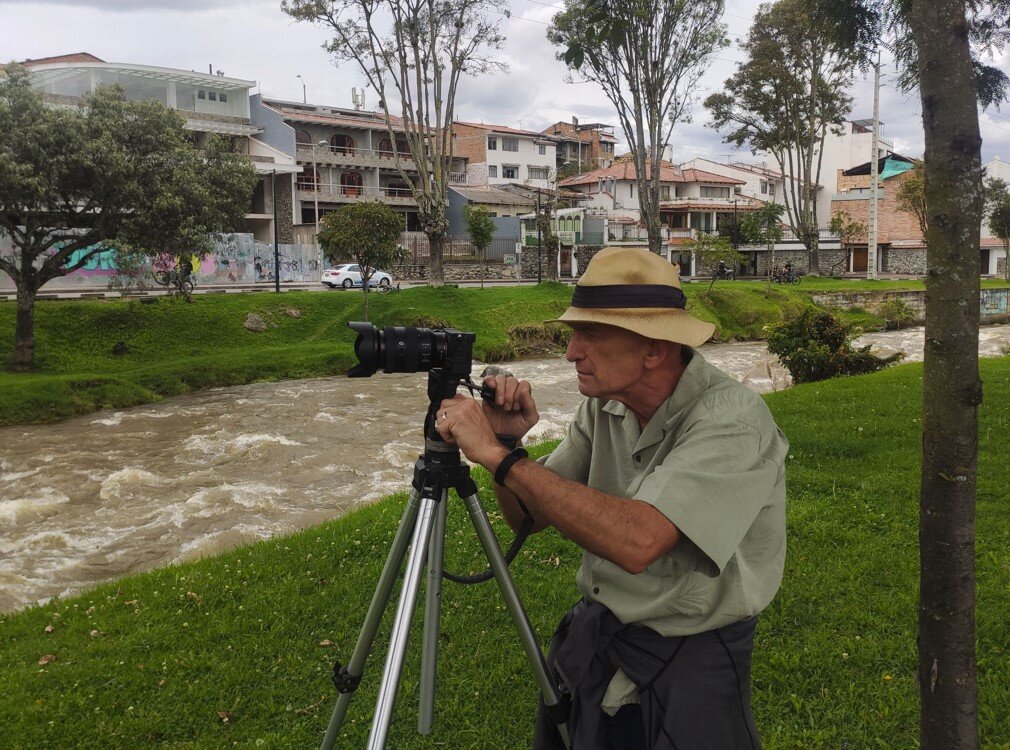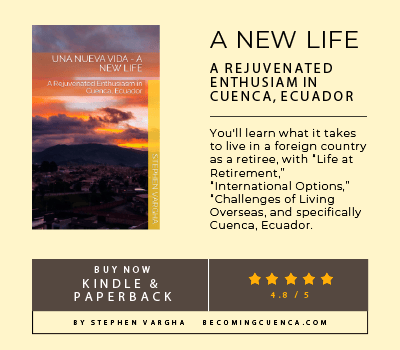Editor’s Note
This article has been provided by guest contributor, Stephen Vargha. Stephen has put a lot of effort into researching this topic for his new book and we’re grateful for his insights into healthcare in Ecuador & the US. Of course, if healthcare is a core reason for your move to Ecuador, we do encourage you to cast a very wide net when researching as you’ll find many different opinions.
There is a common perception among Americans that the United States offers the most advanced and best healthcare in the world. One cannot fault them for thinking this as the U.S. accounts for more than 40 percent of all global health spending.
The Peter G. Peterson-Kaiser Family Foundation compiles data on the U.S. health system’s performance in four categories:
- Access and Affordability
- Health and Well-Being
- Health Spending
- Quality of Care
In 2020, the highly respected health foundation found Americans were spending almost 20 percent of the total U.S. GDP on their healthcare. Though it is drastically up from five percent in 1960, it does not compute for most Americans.
The US Spends Significantly More on Healthcare Than Any Other Nation
Nor can Americans wrap their heads around spending $4.1 trillion on healthcare in 2020. That amount will pale to the estimated $6.2 trillion in 2028, according to the foundation.
This same foundation reported in May that the U.S. spent more on healthcare than any other country. Health spending per person in the U.S. was $11,945 in 2020, the last year statistics were available worldwide. Another study had it higher at $12,530 per American.
Americans spent at least $4,807 more than the #2 Swiss. To put that into perspective, the cost of living in Switzerland is 18 percent more expensive than in the United States.
Healthcare expenditures per capita quickly go down from Switzerland. Germans spend almost half as much as Americans at $6,731 per year, with the Dutch following at $6,299 annually. Comparing health spending in the U.S. to other countries is complicated, but it is clear Americans spend too much when the average among wealthy countries is $5,736. The United States is over double this worldwide average.
US Health Insurance Costs Increasing
Needless to say, high and rising healthcare spending increased insurance premiums and out-of-pocket costs. Between 2010 and 2018, spending per American with private insurance grew considerably faster than for people covered by Medicare, increasing at an average annual rate of 3.8 percent. Medicare was less than half of that at 1.7 percent.
For retires, their pocketbook took a hit in January, when the standard monthly premium for Medicare Part B enrollees jumped to $170, an increase of almost $22. Another way to look at it, the premium increased 14.5 percent while the consumer price index climbed 7 percent in 2021, which was the largest 12-month gain since 1982, according to Labor Department data.
After paying the high-priced premiums, Medicare covers only two-thirds of the cost of healthcare services. Out-of-pocket spending makes up about 12 percent of the medical bill, according to the nonpartisan, nonprofit research institute, Employee Benefit Research Institute.
That out-of-pocket percentage will most likely increase according to the 2020 U.S. Census. Ten-thousand Baby Boomers were aging into the federal health insurance program every day. As the years pass, the Medicare program will have an increasing number of older people, making it more expensive for its beneficiaries.
$200 Billion On Cancer Care Alone
Cancer is currently the second leading cause of death in the United States, making it one of the country’s biggest health issues. It is one reason the U.S. is spending over $200 billion per year on cancer care. That is roughly $600 per American. In comparison, the average is half for other wealthy countries.
Dr. Cary Gross is a Professor of Medicine and Public Health, and Director of the National Clinician Scholars Program at Yale. He raised the question, “This raises the key question: Are we getting our money’s worth?”
Is It Worth It?
He and his fellow researchers found cancer care spending in the U.S. showed no relationship to cancer mortality rates. “In other words, countries that spend more on cancer care do not necessarily have better cancer outcomes,” said Ryan Chow, lead author, M.D./Ph.D. student at Yale University.
They found six countries — Australia, Finland, Iceland, Japan, Korea, and Switzerland — had both lower cancer mortality rates and lower spending per person than the United States.
It should be noted Americans aren’t using more healthcare than people in other nations. Instead, U.S. residents paid more for each doctor’s visit and treatment than citizens of other countries.
Do You and Your Partner Have $1M for Healthcare?
Numerous studies have shown how increasing medical expenses can add up. If healthcare costs grow at 2 percent above consumer inflation, a healthy couple could expect to spend more than $1 million on healthcare expenses in their lifetime, nearly the same amount as they could expect to collect in Social Security benefits, according to an analysis by the leading provider of retirement healthcare cost data, HealthView Services.
A retired woman, on a fixed income, in Wilmington, North Carolina probably spoke for many when she said, “You can either: 1 – Eat; 2 – Pay Bills; or 3 – Buy Medication. One can NOT do all three.”
An estimated 100 million Americans described the U.S. healthcare system as either “expensive” or “broken,” according to the West Health-Gallup 2021 Healthcare in America Report. Almost half said their view of the system has worsened during the Covid pandemic.
It is not just the poor who expressed those feelings. The high cost of healthcare was felt across most income levels. About 20 percent of households earning more than $120,000 a year said cost still impedes them from seeking care.
One in 20 adults reported knowing someone who died because they could not afford treatment. For Black Americans, that likelihood doubled to one in 10.
A statement from Gallup senior researcher Dan Witters said, “The sharp worsening in public opinion regarding the affordability of care and medicine is startling. From rapidly rising inflation, to deferred care pushed into 2021, to more people having to pay for COVID-19 care itself, the U.S. healthcare cost crisis is now coming to a head.”
More Spending Doesn’t Equal Better Life Expectancy
Despite Americans spending significantly more on healthcare compared with the residents of other developed countries, they do not enjoy better outcomes. The United States lags behind other countries when common health metrics are applied.
One of them is life expectancy. In Switzerland, it is currently 83.2 years, while in France it is 82.3 years. The U.K. is 80.4 years. Life expectancy for Americans is six years less than the Swiss at 77.3 years.
Health Care Efficiency – Ecuador vs US
A 2014 Bloomberg survey of health care efficiency, factoring both cost and quality, listed the United States as number-46 in the world while Ecuador was much higher at number-20. That same 2014 study found the United States spent $8,608 per capita for healthcare, compared to $332 for Ecuador.
Note the cost per person for the U.S. in 2014 and compare it to the newest figure. In just six years, the cost of healthcare in the United States went up 39 percent while consumer good prices went up only nine percent. Healthcare costs are out of control with no end in sight.
Stephen’s New Book on Moving to Cuenca
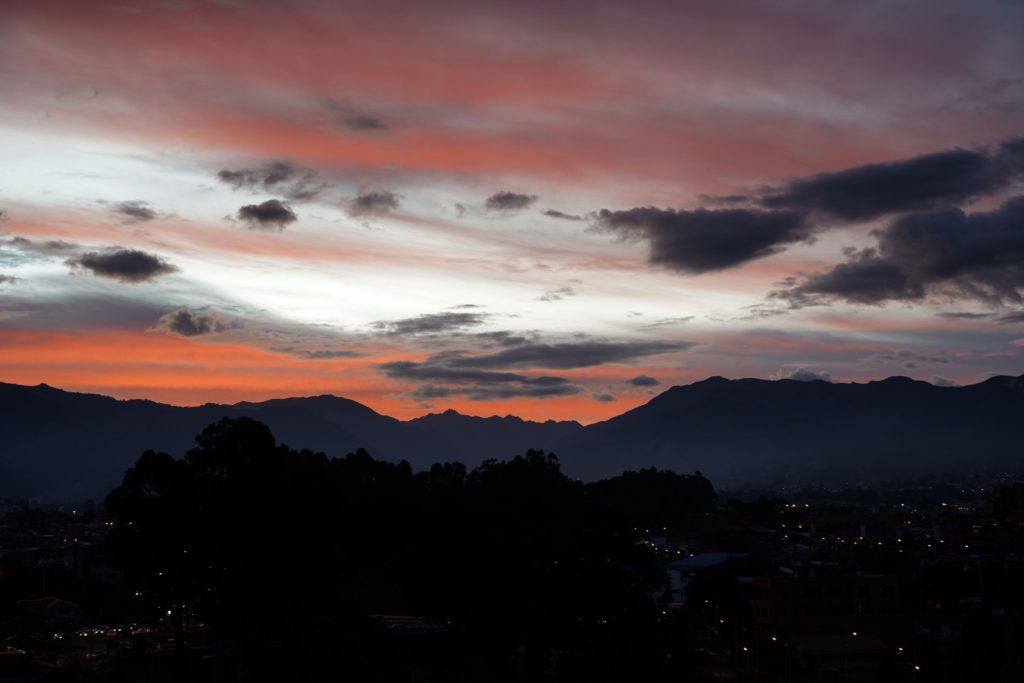
Like the sunset, there is hope. Desmond Tutu once said, “Hope is being able to see that there is light despite all of the darkness.” It is why there is a sunset over the city of Cuenca, Ecuador for the cover of the book, “Una Nueva Vida – A New Life.”
Published in May, it may be the most thorough book about moving to and living in Cuenca. It is written by journalist Stephen Vargha, who graduated from the Edward R. Murrow College of Communication at Washington State University. It is considered the best school for television news in the western half of the United States.
During his 19 years as a photojournalist, he took his camera to faraway places such as Italy, Kuwait, Saudi Arabia, and the UK. In 1997, Vargha was sent to London, England to cover the death of Princess Diana. Two years later, he was based on the aircraft carrier U.S.S. Roosevelt, covering Operation Allied Force.
His photography and editing were recognized several times including, an Associated Press Best Special, UPI Photographer of the Year, and winning several awards from the prestigious National Press Photographers Association.
After hanging up the camera in 2000, Vargha became the Senior Assignment Editor at a Raleigh-Durham, North Carolina television station. His research skills were considered the best at the station, and reporters and producers leaned heavily on him to provide the best up-to-date and accurate information.
In 2019, his wife, Joanna, encouraged him to retire early to enjoy life to the fullest. The two of them and their Miniature Australian Shepherd, Peanut, made the big move south in January 2020.
Six months later, Vargha became the Asistente de Información Pública for Orquesta Sinfónica de Cuenca. Shortly after that, he became a contributing writer to CuencaHighLife, an online English-speaking newspaper. His articles were in support of local artists and businesses as he wanted to give back to the community.
Now, he is doing it with his book, available in paperback and on Kindle at Amazon. “Una Nueva Vida – A New Life” is aimed at the American, Canadian, European, and anyone else who wants to live in a beautiful place like Cuenca.
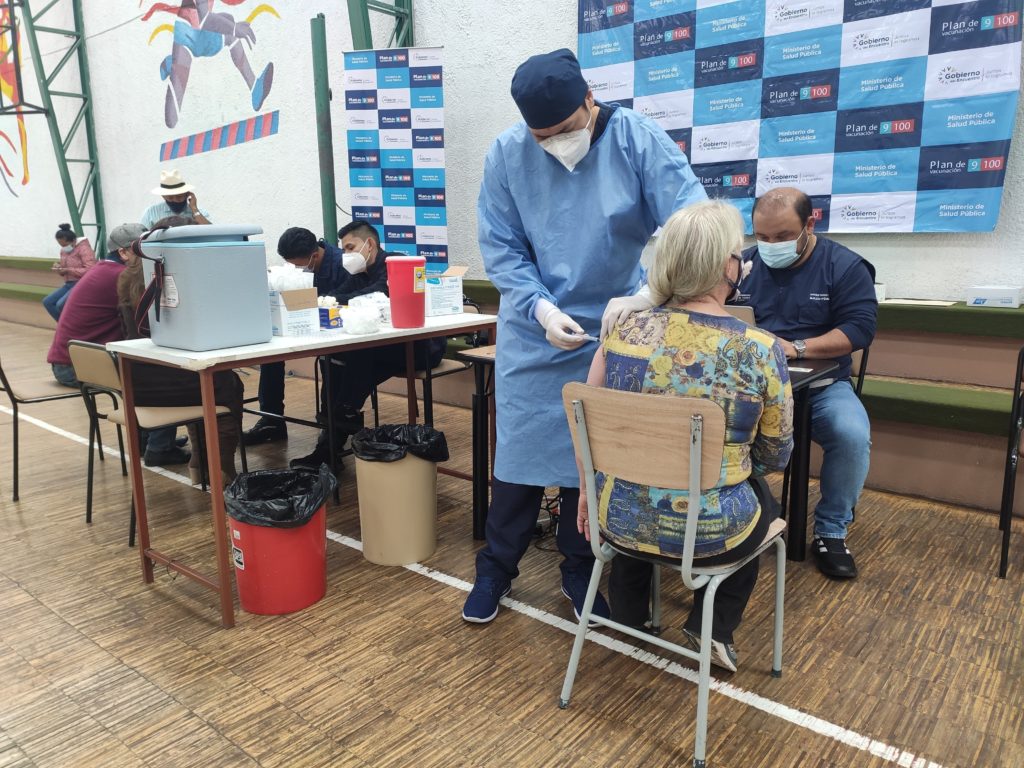
Vargha spent a year writing this 463-page book. Numerous people were interviewed and lots of sources were used to what he thinks will become an authoritative source for moving to Cuenca. The book has 19 chapters to address all of your questions and concerns:
- Chapter 1 – You’re Crazy
- Chapter 2 – Life at Retirement
- Chapter 3 – Where Do I Reside?
- Chapter 4 – International Options
- Chapter 5 – Challenges of Living Overseas
- Chapter 6 – Cuenca, Ecuador
- Chapter 7 – Social Environment
- Chapter 8 – Housing
- Chapter 9 – Health and Healthcare
- Chapter 10 – Transportation
- Chapter 11 – Green Spaces
- Chapter 12 – The Arts
- Chapter 13 – Food
- Chapter 14 – Consumer Goods and Services
- Chapter 15– Finances
- Chapter 16 – Fellow Expats
- Chapter 17 – Cuencanos Point of View
- Chapter 18 – Moving to Cuenca
- Chapter 19 – Dreaming and Going For It
Health & Healthcare Chapter
The chapter on health and healthcare goes into great detail and addresses what Americans are facing. Vargha gives Americans an alternative to forking over their life savings to the insurance companies, hospitals, pharmaceutical companies, and doctors.
And avoiding bankruptcy. Medical bills are reported to be the number-one cause of bankruptcies in the United States. A 2007 study claimed that 62 percent of bankruptcies were caused by medical issues.
Healthcare costs in Ecuador are 1/3 compared to the US
“In the 2008 constitution, health was declared a human right. A national health service, Instituto Ecuatoriano de Seguridad Social (IESS), was established to provide universal and free public health care, including complementary and alternative medicine,” the book said.
Because of that, healthcare is a bargain in Ecuador. The cost for services is about a third of what one pays in the United States. Sometimes it is even less.
Self-Insuring for Minor Health Issues
That is why most expats self-insure for routine exams and minor health issues. Currently, the cost of visiting your family doctor in Cuenca was $30. This is not the copay, but the total bill for the visit.
“From personal experiences, my wife had to get an MRI for her sinus and breathing problems. She went to a laboratory offering advanced diagnostic imaging services. The MRI cost us $85 in cash. You read that correctly,” Vargha wrote. “That same MRI in the United States would have averaged $1,325, though prices can range from $375 to $2,850.”
An American woman visiting Cuenca in 2020 had a bad accident and was surprised at how affordable her medical care was. “Went on a tour of Cuenca this morning. We wound up taking a tour of a private hospital because I fell while on our tour. I fractured my tibia because I was stupid and not paying attention. The hospital visit was 2 hours. Had an x-ray done and a computer tomography scan. Tomorrow morning, I will have an MRI to see if I tore ligaments. $270 total for everything including the MRI scheduled for tomorrow as well the medication, leg brace and crutches. WOW,” she said in Vargha’s book. “So so different from the U.S. The care was a bit different but good. The price difference compared to what it would have cost in the states is significant.”
Another way healthcare is affordable in Cuenca is the follow-up visits. Doctors do not charge anything for a follow-up visit. It is considered a part of the initial visit. This is not what usually happens in the United States.
Costs vs Quality
As counter intuitive as it sounds, Quality and Cost are not always inversely proportional. Looking at the cost of healthcare in the United States versus Ecuador makes one question the quality.
In Cuenca, doctors are well-trained. Many of them are educated and trained in the United States and Europe. Others go to the best medical schools in Latin America. “The family doctor we have was educated in Europe. Our Ear, Nose, and Throat (ENT) doctor went to school in Mexico City. She is excellent and well-liked by expats,” Vargha said in his book. “Many doctors in Cuenca speak English as a second language. Our family doctor is from Belgium, and Dr. Maïté Depreeuw speaks French, Flemish, Spanish, German, and English.”
Knowing that Cuenca has numerous highly qualified doctors, the care one gets has to be questioned. “In my opinion (and many expats concur), doctors in Cuenca genuinely care about your health. You are not a number,” Vargha said. “In the United States, many medical practices are trying to get as many patients into their facility as possible. It is like a factory as little time is spent with you. There are many other patients waiting to be seen due to overscheduling. Seriously, how many times have you waited a long time for your doctor to be seen?”
Customer Service goes beyond that. To keep healthcare costs down, most doctors in Cuenca do not have a big administrative staff that schedules patients, files insurance paperwork, answers phones, etc. Most of the time, it is just the doctor doing everything, including scheduling your appointment.
Ecuador Hospital Care
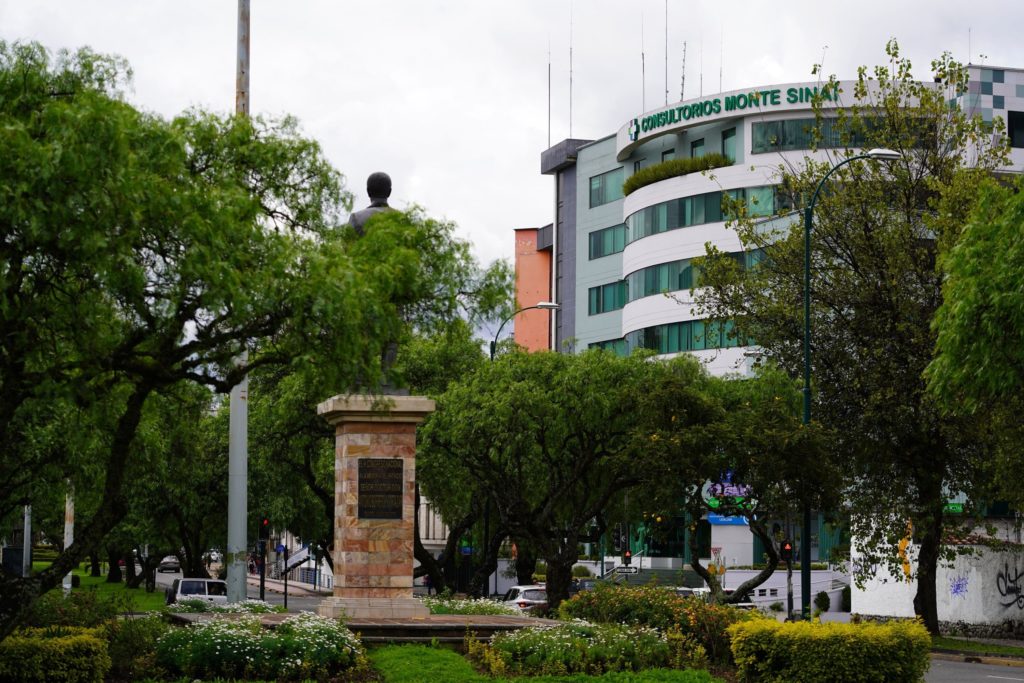
At some point, you will end up at a hospital. It is inevitable. The quality of care at most Ecuadorian hospitals is excellent, be it a private hospital or a public (IESS) hospital. Probably the biggest difference between the two types of hospitals is that public hospitals have a lower grade of care and a longer time waiting for service. Expats all say if their medical condition requires immediate attention, it is addressed right away at a public hospital.
You can go to either type of hospital, but a private health facility will require full payment before you can check out, even if you have private health insurance. The level of care for a patient varies, with the highest level of care purportedly being at private hospitals.
Private Health Insurance, IESS or Both?
The book talks about an expat couple who said, “We have had major private health expenses over the years including multiple hospitalizations, but so far have preferred Hospital Monte Sinaí to IESS, though we cannot claim the care is superior.”
Monte Sinaí is a private hospital in Cuenca, and it should be noted that this private hospital charges a fraction of the price that you would pay in the United States.
The couple added, “The one time we did use IESS was for annual physicals. That was an amazing experience, with 22 appointments and exams between the two of us (blood tests, x-rays, prostate pokes, you name it), all covered free at no additional charge, easily covering a year or more of IESS insurance premiums if we had gone to Monte Sinaí instead.”
Booking Appointments via WhatsApp
Need an appointment with your family doctor or specialist? WhatsApp your doctor to make one. Extremely popular in Latin America, WhatsApp allows users to send secure text messages and voice messages, make voice and video calls, share images, documents, user locations, and other content. Doctors usually respond quickly to your request to see them.
WhatsApp goes beyond just making appointments. Doctors can provide examinations via WhatsApp. It was an excellent tool to use during the height of the Covid-19 pandemic when all of Ecuador was locked down.
“My wife had a health issue at the height of the pandemic in Ecuador, when almost everything was locked down and closed. Instead of seeing our family doctor, my wife was examined by Dr. Depreeuw via WhatsApp,” Vargha said in his book. “The health issue was resolved without ever leaving the home.” And surprisingly, the family doctor did not charge for the online consultation.
“Una Nueva Vida – A New Life” provides a great example of how doctors in Cuenca go beyond the services provided in the United States: “When our doctor went on vacation in Belgium for her birthday, a good friend of ours needed her medical advice and help. Our friend was battling cancer and was having issues with his medicine and treatment. He used WhatsApp to contact her in Belgium. Dr. Depreeuw spoke to our friend twice from Belgium. One of their conversations was over an hour.”
On top of that, from Belgium, Dr. Depreeuw made all of the surgery arrangements for her patient battling cancer. The whole procedure went off without a hitch, and the cancer patient was absolutely thrilled at the treatment at the IESS hospital.
This example in the book is far from being an anomaly in Cuenca. On top of WhatsApp time, patients receive more facetime with doctors as most do not have nurses. The doctor takes your pulse, temperature, and payment (usually cash). Anything a nurse would do in the United States is done by the doctor. It keeps the costs down, and it allows more interaction between the doctor and patient.
House Calls
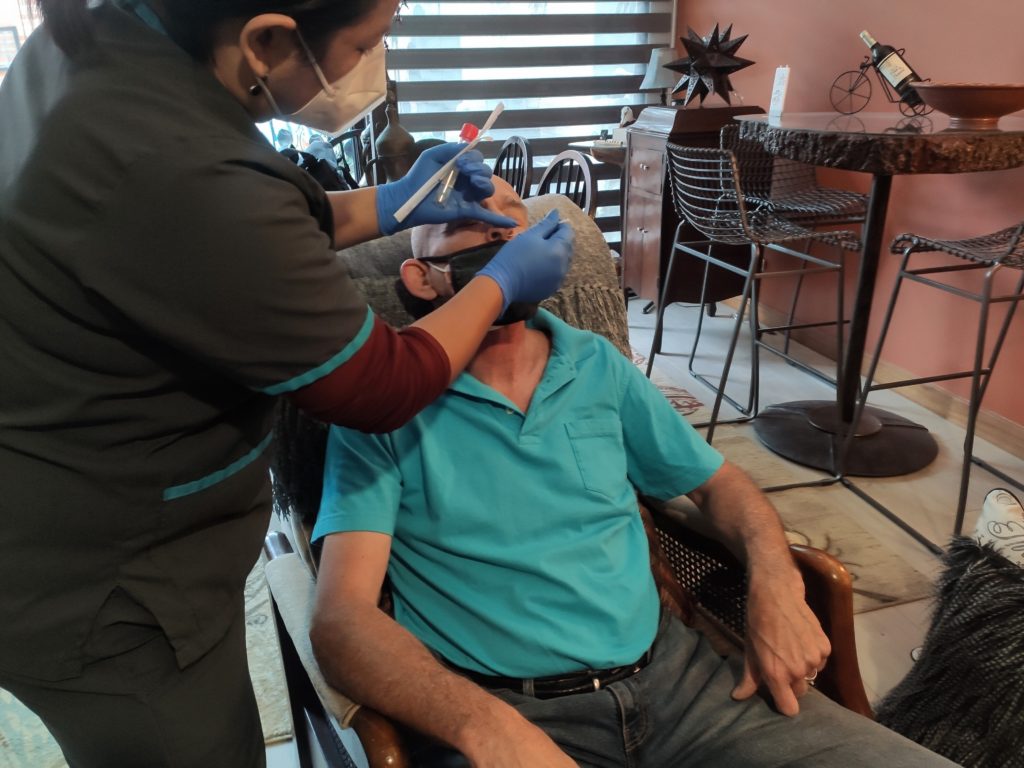
Maybe the best part of healthcare in Cuenca are house calls. In the early 1930s, house calls by doctors in the U.S. were 40 percent of doctor-patient meetings. A half-century later, in 1980, it was less than one percent.
House calls are rather common in Cuenca. It is not the preferred way of having a doctor-patient meeting, but if it needs to be done, the doctor will come to your home. Vargha wrote, “A good example is our friend and neighbor. He had surgery and was unable to visit the doctor, so his physician came to his home to examine our friend and change his bandages.”
Low Cost of Prescription Medicines
Many common prescription medicines are available in Ecuador without a doctor’s prescription for a fraction of the price in the United States. The exceptions are controlled substances such as hydromorphone (Dilaudid), methadone (Dolophine), meperidine (Demerol), oxycodone (OxyContin, Percocet), and fentanyl (Sublimaze, Duragesic). Sleeping pills need a doctor’s prescription, too.
Medication that you can get in Ecuador is generally good quality and it is very affordable. Basically, everything offered here is a generic drug. Generic medicines are offered by the pharmacist before a name brand drug. If you want the name brand medicine, you have to ask the pharmacist for it.
The book clarifies what generic means in Ecuador. “In the United States, generic drugs are identical to their brand name counterparts in a number of ways, including physical form, dosage, strength, safety, quality, intended use, and performance characteristics. According to the Federal Drug Administration (FDA), generic drugs can cost an estimated 85 percent less than the medicines they are designed to duplicate.”
It adds, “Generics are not guaranteed to be exact equivalents in Latin America as controls are not as restrictive as what is imposed by the FDA. According to the World Health Organization, generic drugs in Latin America (including Ecuador) are not put through the same approval process as what is done with the FDA. In Ecuador, agencies have just one month to prove a generic drug harmful or not equivalent.”
Research Your Prescriptions Before Arriving
Not all generic medicines available in the United States and Canada are available in Ecuador. “I was taking a common statin drug for my cholesterol in North Carolina. When I ran out of it in Cuenca, I took the prescription bottle to the big pharmacies (Cruz Azul, Fybeca, and Pharmacy’s). None of them had it,” Vargha wrote. “My family doctor told me that she thought I would have difficulties, so she prescribed a different medicamento genérico.” That medicine has worked as well as what was prescribed in the United States.
Prescription drug prices can drain your wallet so International Living (I.L.) did some price comparisons in 2020 for commonly used prescription medications. In their comparisons, I.L. found that Lipitor in the U.S. cost $453 for 30 tablets with a strength of 40mg. That same dosage and amount in Ecuador was $52.
Looking at Glucophage, I.L. found that it set you back $40 for 30 tablets with a strength of 500mg. in the United States. It was just nine bucks in Ecuador for the same amount and dosage. Glucophage in Ecuador was about 22 percent of the cost in the United States.
Pill Packaging Differs
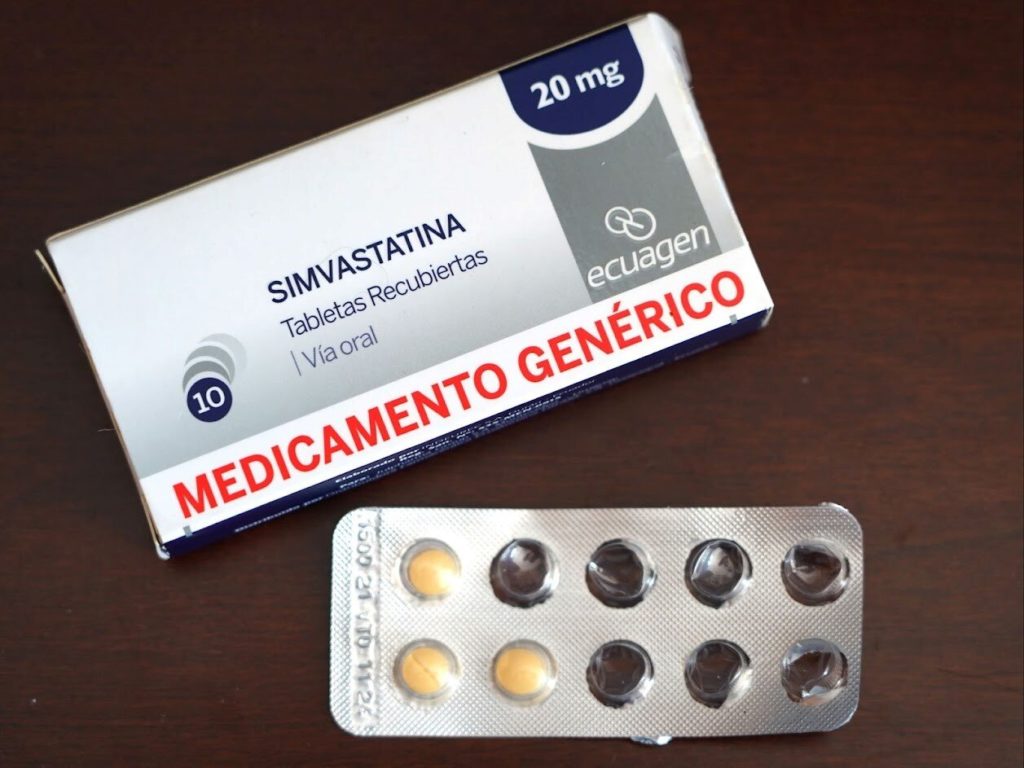
It will take little time in Cuenca to notice an interesting thing about the differences in prescription drugs between the U.S. and Ecuador. When one gets their prescription drugs in the U.S. and Canada, their pills come in a plastic cylinder container. Whatever has been prescribed comes all together in the container, with your name and instructions.
In Ecuador, prescription drugs come in packs of ten. Each drug is sealed individually and must be popped out through the thin foil. This means that to get a month’s worth of a drug, you have to buy three boxes.
Vargha has a theory about that. “My guess for this packaging is that the average Ecuadorian cannot afford more than ten pills at a time. Sometimes they cannot even afford that as the pharmacist will sell any number from the box,” he wrote in his book. “I know this to be true as I have had boxes with two sets of five pills as the other half had been sold to another customer.”
Ecuador’s Handling of COVID
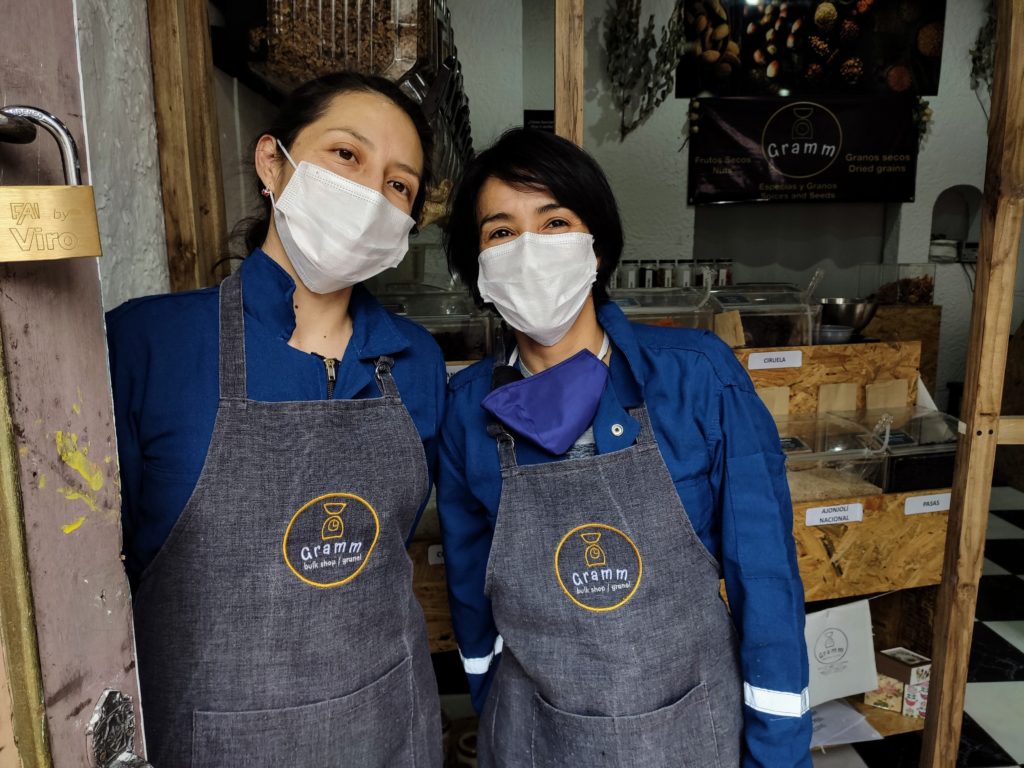
One cannot have a chapter on healthcare without mentioning the pandemic that struck China in late-2019 and the rest of the world soon afterwards. In April 2020, the New York Times had a big headline exclaiming, “Ecuador’s Death Toll During Outbreak Is Among the Worst in the World.” In Guayaquil, fatalities during the first two weeks of April of that year were eight times higher than usual. Bodies were dumped on the sidewalks of Ecuador’s largest city, where temperatures every day were 90°F / 32°C.
It was an international embarrassment as then President of Ecuador, Lenín Moreno, struggled to address the dire situation in Guayas Province and eventually the entire country. By the end of April 2020, Ecuador was reporting over 2,000 new cases of the coronavirus every day. It went up and down for the next 12 months with new cases peaking on May 4, 2021, at 2,273 new cases per day. Ecuador has about 17.6 million people in the country the size of Colorado.
Finger pointing says the Moreno administration could not handle the pandemic. Some of it was just, but another big factor was the availability of vaccines. In the first months that vaccines from Pfizer-BioNTech, Moderna, and AstraZeneca were available, the richer countries in the world bought it all up and hoarded it. At one point in 2021, the United States had 60 million doses of AstraZeneca that were not being used.
On May 24, 2021, Guillermo Lasso became the 47th President of Ecuador, and immediately announced “Plan de Vacunación 9/100,” a plan to vaccinate 9 million people against the virus in 100 days. It was a very ambitious plan to pull Ecuador out of a nosedive concerning the pandemic. Less than nine percent of the country had been fully vaccinated. Some official reports said it was as low as three percent. In comparison, the United States had already totally vaccinated 41 percent of its people.
Two months later, the world was looking at Ecuador for what it was accomplishing. The World Bank posted an article online entitled, “Why Ecuador Vaccinates Its Population Faster Than the Rest of the World.” Ecuador was administering the highest daily number of doses per 100 people in the world.
In early-September 2021, President Lasso announced the country had reached its vaccination goals, having quickly gone from having one of the lowest vaccination rates in all of Latin America to having the third highest, behind only Chile and Uruguay.
The very next week, it was announced Cuenca and Azuay province had reached “herd immunity” against Covid-19. The ministry reported 86 percent of Azuay province had received at least one shot, with 81 percent of the population fully vaccinated. For comparison, Vermont was the most vaccinated state in the U.S. at that time with 68 percent fully vaccinated.
As of May 2022, it is estimated that over 90 percent of Azuay’s residents, 5 years and older, were fully vaccinated against Covid. That same month, Vermont was the most vaccinated state at 82 percent. At the opposite end was Alabama at 51 percent.
Mask Mandates
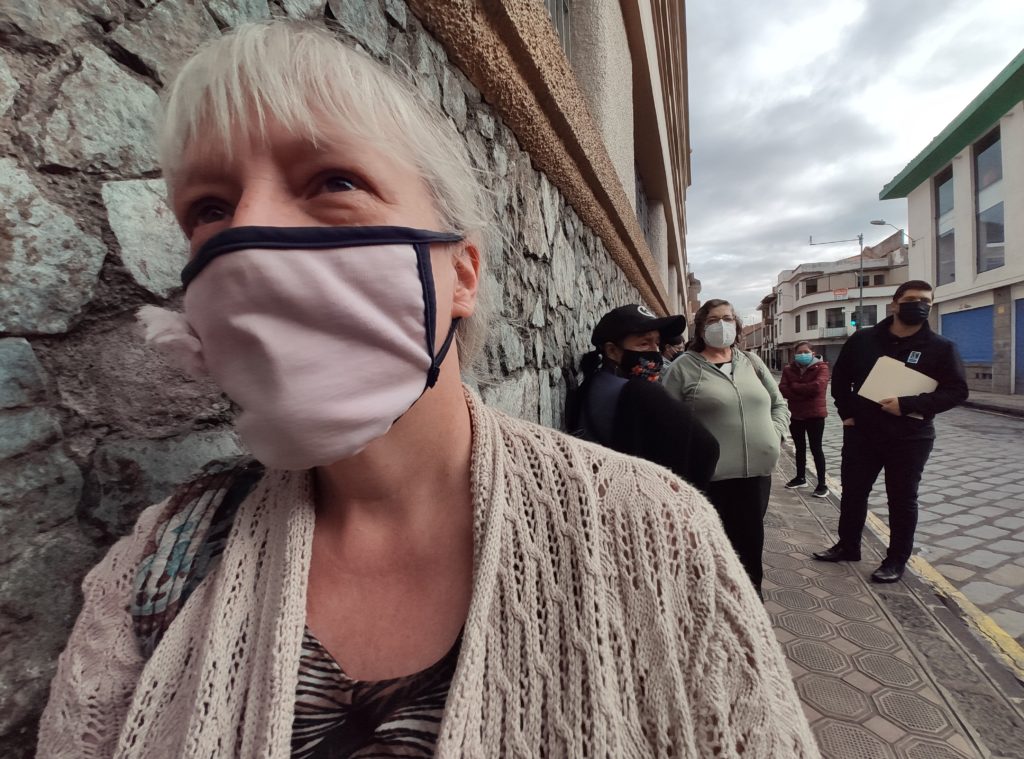
Helping to slow the spread of the coronavirus was the country’s mandatory wearing of face masks out in public. The requirement began at the beginning of the pandemic. Though there are no official statistics on it, most would say there was about a 99 percent compliance rate in Cuenca. By June 2020, the 27th straight month for the requirement in Cuenca, the rate was still very high, at about 90 percent.
The pandemic story is to show that this middle-income country had the resolve to address a huge health crisis. It is also an exclamation point to its healthcare that many American expats in Cuenca feel is superior to what they left behind in the United States.
A Cuencano, who the author and his wife are good friends with, concurs. Renata told them Cuenca’s healthcare is the pride of Ecuador. “We have a great health system. People from Guayaquil and other large cities come to Cuenca for their medical needs,” said Renata. “Our hospitals are modern and well organized. Maybe the best thing is it is very affordable.”
Many Americans are in total agreement with Renata. An American, who had to have emergency open heart surgery, told Vargha, “The quality was exceptional and amazing! It was hands down better than I would have received in the United States.”
All this gives every American hope that affordable and high-quality healthcare can be had without going into bankruptcy.
Where to Buy Stephen’s Book – “Una Nueva Vida – A New Life”
“Una Nueva Vida – A New Life” is available at Amazon in digital and paperback formats.
Paperback: https://www.amazon.com/Una-Nueva-Vida-Rejuvenated-Enthusiasm/dp/B0B14C9YHJ/ref=tmm_pap_swatch_0
